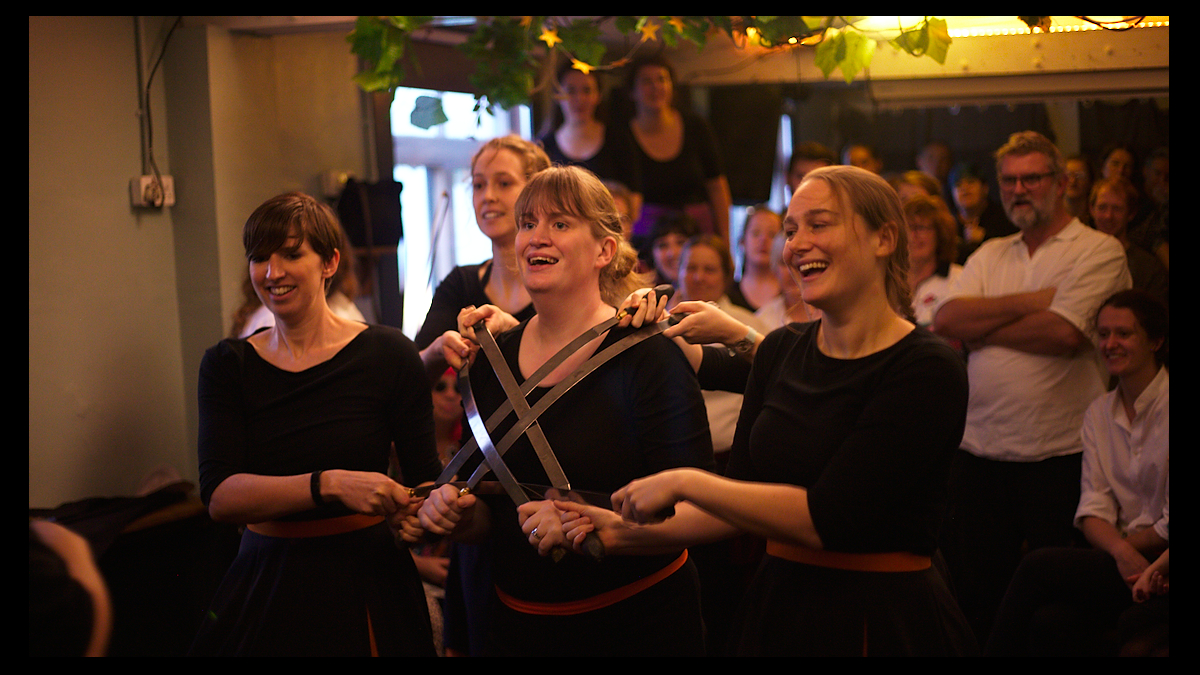|
Trojak (dance)
Trojak ("threesome", "trio", in Polish) is a Silesian folk dance A folk dance is a dance that reflects the life of the people of a certain country or region. Not all ethnic dances are folk dances. For example, Ritual, ritual dances or dances of ritual origin are not considered to be folk dances. Ritual dances .... It is usually performed in groups of three: one male dancer and two female dancers. ''Trojak's'' music has two distinct parts, each having its own tempo and metre. Ignoring the footwork, the figures may have the following arrangements. *All three move in sync from the same foot. *The boy dances with one girl, the second one dancing alone, then the boy switches the girl. *Girls are rolling on and then rolling off the arms. *The trio forms a circle *The boy and the girls separate and move in the opposite directions, then join again. References Polish dances {{Europe-dance-stub ... [...More Info...] [...Related Items...] OR: [Wikipedia] [Google] [Baidu] |
Polish Language
Polish (, , or simply , ) is a West Slavic languages, West Slavic language of the Lechitic languages, Lechitic subgroup, within the Indo-European languages, Indo-European language family, and is written in the Latin script. It is primarily spoken in Poland and serves as the official language of the country, as well as the language of the Polish diaspora around the world. In 2024, there were over 39.7 million Polish native speakers. It ranks as the sixth-most-spoken among languages of the European Union. Polish is subdivided into regional Dialects of Polish, dialects. It maintains strict T–V distinction pronouns, Honorifics (linguistics), honorifics, and various forms of formalities when addressing individuals. The traditional 32-letter Polish alphabet has nine additions (, , , , , , , , ) to the letters of the basic 26-letter Latin alphabet, while removing three (x, q, v). Those three letters are at times included in an extended 35-letter alphabet. The traditional set compri ... [...More Info...] [...Related Items...] OR: [Wikipedia] [Google] [Baidu] |
Silesia
Silesia (see names #Etymology, below) is a historical region of Central Europe that lies mostly within Poland, with small parts in the Czech Silesia, Czech Republic and Germany. Its area is approximately , and the population is estimated at 8,000,000. Silesia is split into two main subregions, Lower Silesia in the west and Upper Silesia in the east. Silesia’s culture reflects its complex history and diverse influences, blending Polish, Czech, and German elements. The region is known for its distinctive Silesian language (still spoken by a minority in Upper Silesia), richly decorated folk National costumes of Poland, costumes, hearty regional Silesian cuisine, cuisine, and a mix of Gothic, Baroque, and industrial-era Silesian architecture, architecture seen in its cities and towns. The largest city of the region is Wrocław. Silesia is situated along the Oder River, with the Sudeten Mountains extending across the southern border. The region contains many historical landmarks ... [...More Info...] [...Related Items...] OR: [Wikipedia] [Google] [Baidu] |
Folk Dance
A folk dance is a dance that reflects the life of the people of a certain country or region. Not all ethnic dances are folk dances. For example, Ritual, ritual dances or dances of ritual origin are not considered to be folk dances. Ritual dances are usually called "religious dances" because of their purpose. The terms "ethnic" and "traditional" are used when it is required to emphasize the cultural roots of the dance. In this sense, nearly all folk dances are ethnic ones. If some dances, such as polka, cross ethnic boundaries and even cross the boundary between "folk" and "ballroom dance", ethnic differences are often considerable enough to mention. Background Folk dances share some or all of the following attributes: *Dances are usually held at folk dance gatherings or social functions by people with little or no professional training, often to traditional music. *Dances not generally designed for public performance or the stage, though they may later be arranged and set for ... [...More Info...] [...Related Items...] OR: [Wikipedia] [Google] [Baidu] |
